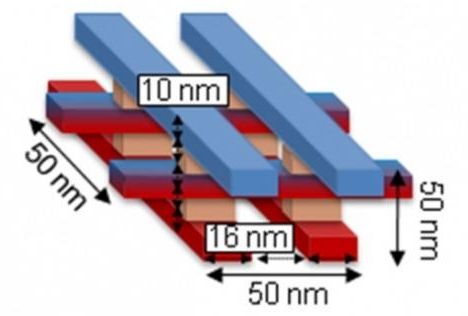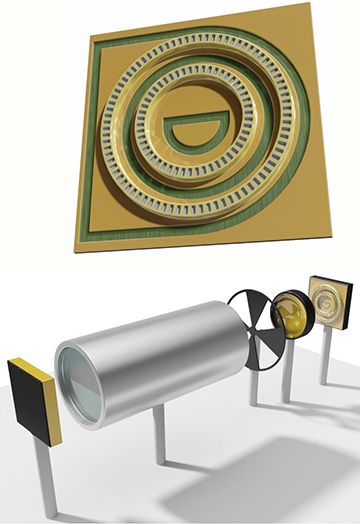Archive for the ‘computing’ category: Page 692
Oct 31, 2016
Would You Like to Be Uploaded to a Computer When You Die?
Posted by Shane Hinshaw in categories: biotech/medical, computing, cyborgs, life extension, neuroscience
Rattling around inside a hard drive doesn’t sound like an awful lot of fun — but then, neither does death.
Both eventualities are rather difficult to imagine, but we’ll all have to give them some thought sooner rather than later. Neuroscientist and neuroengineer Randal Koene thinks it’s only going to be another 10 years before we replace parts of the brain with prosthetics.
From there, it’s just a matter of replacing each region systematically, to end up with someone whose brain is immortal and electronic. Could the last person to die have already been born?
Continue reading “Would You Like to Be Uploaded to a Computer When You Die?” »
Oct 31, 2016
Edmonton researchers’ tiny discovery may revolutionize computers
Posted by Karen Hurst in categories: computing, nanotechnology, particle physics, quantum physics
New method for creating smaller switches for QC identified and making smaller and more efficient QC systems possible.
Edmonton nanotechnology researchers working with atom-sized materials have made a breakthrough that could lead to smaller, ultraefficient computers.
The team, led by Robert Wolkow, together with collaborators at the Max Planck Institute in Hamburg, have developed a way to create atomic switches for electricity nearly 100 times smaller than the smallest switches, or transistors, on the market today. Their findings appeared in the Oct. 26 edition of the scientific publication Nature Communications.
Continue reading “Edmonton researchers’ tiny discovery may revolutionize computers” »
Oct 31, 2016
Tiny Computer Pushes the Envelope with Micro-Memory
Posted by Karen Hurst in category: computing
Talk about downsizing – researchers at the University of California in Santa Barbara have developed a design for a 50 nanometer square computer, the university announced Oct. 27.
For now, that size is entirely theoretical. It could be managed by a novel kind of logic that enables the computer to process data inside a three-dimensional structure.
“In a regular computer, data processing and memory storage are separated, which slows down computation. Processing data directly inside a three-dimensional memory structure would allow more data to be stored and processed much faster,” said Gina Adam, a postdoctoral researcher and the lead author of the paper.
Continue reading “Tiny Computer Pushes the Envelope with Micro-Memory” »
Oct 31, 2016
Toward Handheld QCL Sensors
Posted by Karen Hurst in categories: computing, quantum physics
In the TU Wien design, quantum cascade heterostructures are arrayed within concentric ring-shaped waveguides (top; diameter of outer ring is 400 microns), and can act as both sources and detectors of light on the same chip. In the specific setup tested by the lab (bottom), one of the ring structures (on the right), acting in QCL mode, sends its light through a chamber containing the gas to be analyzed. The beam is reflected by a mirror (on the left) and sent back through the chamber, to be picked up by the other ring structure, acting in detector mode. [Image: TU Wien]
Quantum cascade lasers (QCL) excel as mid-infrared light sources, a characteristic that has made them a linchpin in many environmental and industrial gas-sensing applications. But though QCLs themselves can be quite small, actually setting up a sensor system requires other elements beyond the laser, which can make it tough to design compact devices ready for field use.
A team of scientists from the Vienna University of Technology (TU Wien), Austria, now offers a concept that the group believes could make designing handheld QCL-based sensors a lot easier. The key: a clever scheme that combines the laser and the detector on a single chip less than half a millimeter across (ACS Photon., doi: 10.1021/acsphotonics.6b00603).
Oct 31, 2016
A Tiny Machine: UCSB electrical and computer engineers design an infinitesimal computing device
Posted by Carse Peel in categories: computing, engineering, nanotechnology, particle physics
Abstract: In 1959 renowned physicist Richard Feynman, in his talk “Plenty of Room at the Bottom,” spoke of a future in which tiny machines could perform huge feats. Like many forward-looking concepts, his molecule and atom-sized world remained for years in the realm of science fiction.
And then, scientists and other creative thinkers began to realize Feynman’s nanotechnological visions.
In the spirit of Feynman’s insight, and in response to the challenges he issued as a way to inspire scientific and engineering creativity, electrical and computer engineers at UC Santa Barbara have developed a design for a functional nanoscale computing device. The concept involves a dense, three-dimensional circuit operating on an unconventional type of logic that could, theoretically, be packed into a block no bigger than 50 nanometers on any side.
Oct 31, 2016
No Technology Thrives Alone: Progress Is All About Convergence
Posted by Elmar Arunov in categories: biotech/medical, business, computing, Ray Kurzweil
15 years ago, Ray Kurzweil published one of the most significant essays in the history of futurism: “The Law of Accelerating Returns.” This piece showcased the immense power of exponential technology versus linear technology and became a pivotal concept for anyone trying to anticipate what the future held.
The essay predicted advances in business and technology with eerie precision, including how exponential growth would ripple through any technology that became an information technology, such as computing, biotechnology, or energy.
Continue reading “No Technology Thrives Alone: Progress Is All About Convergence” »
Oct 30, 2016
Breaking into the Simulated Universe
Posted by Andreas Matt in categories: computing, Elon Musk, ethics, internet, neuroscience
I argued in my 2015 paper “Why it matters that you realize you’re in a Computer Simulation” that if our universe is indeed a computer simulation, then that particular discovery should be commonplace among the intelligent lifeforms throughout the universe. The simple calculus of it all being (a) if intelligence is in part equivalent to detecting the environment (b) the environment is a computer simulation © eventually nearly all intelligent lifeforms should discover that their environment is a computer simulation. I called this the Savvy Inevitability. In simple terms, if we’re really in a Matrix, we’re supposed to eventually figure that out.
Silicon Valley, tech culture, and most nerds the world over are familiar with the real world version of the question are we living in a Matrix? The paper that’s likely most frequently cited is Nick Bostrom’s Are you living in a Computer Simulation? Whether or not everyone agrees about certain simulation ideas, everyone does seem to have an opinion about them.
Recently, the Internet heated up over Elon Musk’s comments at a Vox event on hot tub musings of the simulation hypothesis. Even Bank of America published an analysis of the simulation hypothesis, and, according to Tad Friend in an October 10, 2016 article published in New Yorker, “two tech billionaires have gone so far as to secretly engage scientists to work on breaking us out of the simulation.”
Oct 30, 2016
Nightmare Machine at CSIRO is slowly but surely learning how to terrify humans
Posted by Karen Hurst in categories: computing, information science, robotics/AI
Story just in time for Halloween.
The prospect of artificial intelligence is scary enough for some, but Manuel Cebrian Ramos at CSIRO’s Data61 is teaching machines how to terrify humans on purpose.
Dr Cebrian and his colleagues Pinar Yanardag and Iyad Rahwan at the Massachusetts Institute of Technology have developed the Nightmare Machine.
Continue reading “Nightmare Machine at CSIRO is slowly but surely learning how to terrify humans” »
Oct 30, 2016
Quantum Liquid on Bismuth Crystal Could Lead to Faster Electronics
Posted by Karen Hurst in categories: computing, quantum physics
Luv this!
In Brief:
- Researchers have demonstrated how electrons travel on different elliptical paths by using a quantum crystal kept at low temperatures.
- The discovery could lead to a new class of microchips far beyond the capabilities of today’s silicon chips.
New developments from Princeton University and the University of Texas-Austin have revealed odd behavior in electrons that could lay the foundation for a new generation of faster microchips, according to a study published in Science.
Continue reading “Quantum Liquid on Bismuth Crystal Could Lead to Faster Electronics” »


















